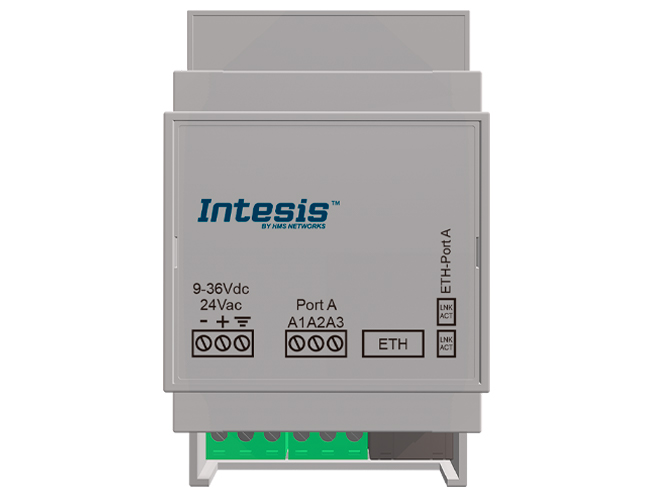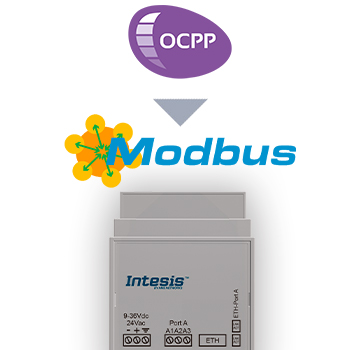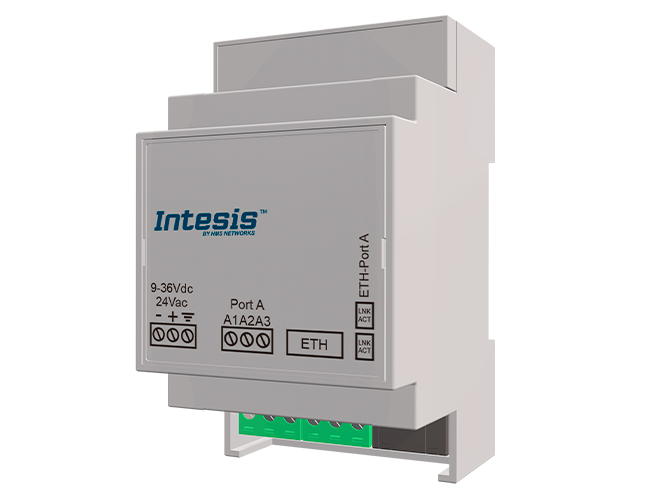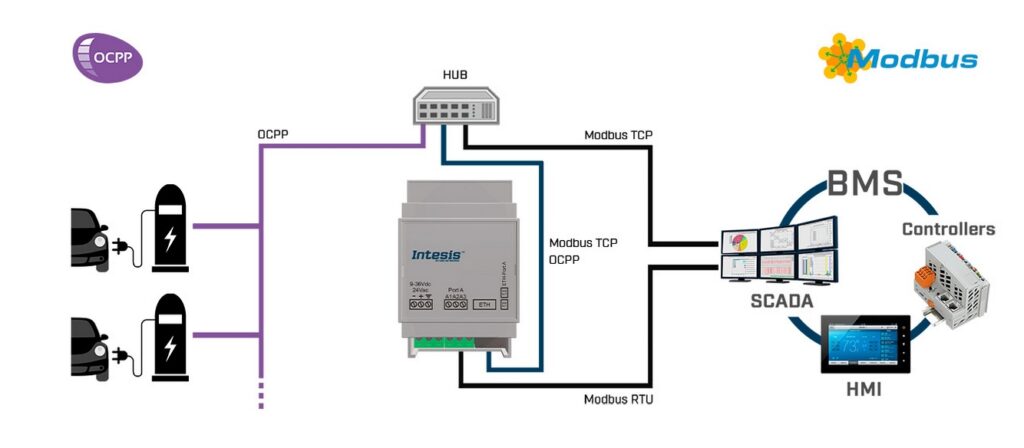HMS Networks has introduced the new Intesis™ protocol translator, which enables monitoring and control of OCPP 1.6-based electric vehicle chargers from any Modbus-based BMS system.
Increasing demand for charging electric vehicles in different types of buildings
The market for electric vehicles has grown by leaps and bounds in recent years and this trend is expected to continue. According to the International Energy Agency, around 7.3 million chargers were installed worldwide in 2019. Chargers are available in different types of facilities: parking garages, public buildings, shopping malls, public transport, etc. The availability of chargers will accelerate the market for electric vehicles and help the shift towards renewable energy. At the same time, it is a challenge for the facilities where the chargers are installed. Energy management and the design of parking spaces equipped with electric chargers require a lot of communication between building management systems and charging stations.
The protocol translation between OCPP and Modbus RTU/TCP allows the monitoring and control of electric charging points.
OCPP is one of the most commonly used protocols in the electric vehicle industry. This standard provides the monitoring and control of electric charging point operations, such as starting or stopping charging, managing users or reading energy values. Although it is used by many electrical charging manufacturers, it is not a protocol that is commonly used in building management systems or building automation controls.
The new and innovative Intesis protocol translator from HMS Networks offers a standard solution for this, connecting the electric vehicle industry and building management. It enables BMS system integrators and manufacturers of electric chargers to provide a simple, cost-effective and reliable way to provide basic monitoring and control of OCPP 1.6-compliant electric charging points from any Modbus-based automation system. The gateway allows the Modbus BMS to manage the users of the charging stations, the charging operations and all measurements provided by the charger. It can thus provide building management control, maintenance services and energy reports to the building owner. The gateway is available in two versions: one for 1 charger and 7 outlets and the other for up to 20 chargers and 7 outlets.
Easy and standard integration into any building management system with Intesis MAPS
The gateway is configured using the Intesis MAPS free configuration tool for all Intesis protocol translators. Intesis MAPS is designed to easily detect OCPP chargers in the network and integrate them into the building automation system using a standard register map that simplifies integration into any Modbus TCP or RTU BMS. The combination of Intesis MAPS and Intesis OCPP - Modbus TCP/RTU protocol translator makes it easy to integrate electric vehicles into building management systems, helping building owners support the use of electric vehicles in their facilities and prepare for the electromobility revolution.




